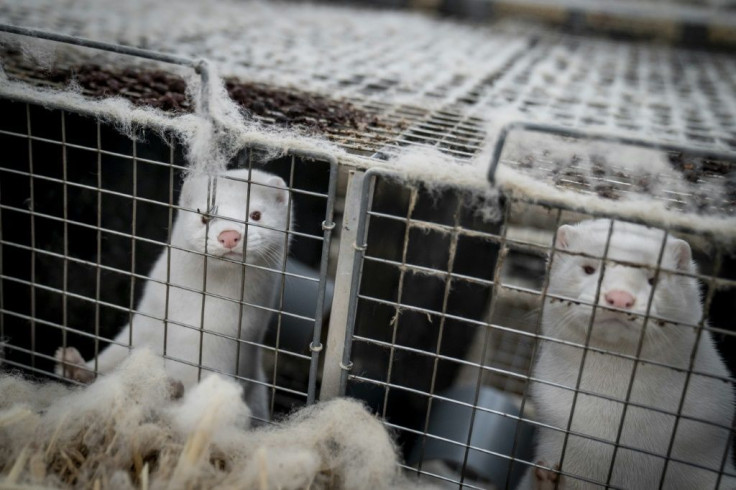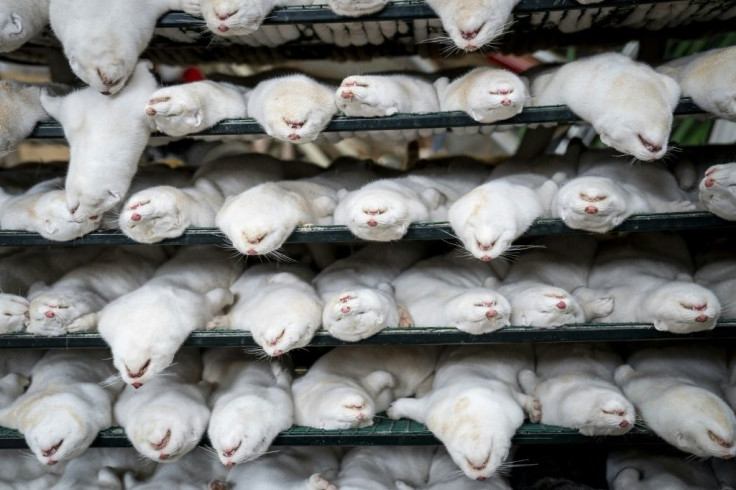Could COVID-19 Kill Off The Fur Industry?
KEY POINTS
- Denmark ordered its entire mink stock culled, an order without legal basis that has left many farmers wondering if they'll ever recover.
- Animal rights groups campaigning against the fur trade on ethical grounds have received a boost from the pandemic.
- Danish fur traders struggled in recent years after being outcompeted by Chinese domestic growers and a new generation's disdain for animal pelts.
Following the recent cullings of Denmark’s mink populations after a strain of COVID-19 was found rampant in them, Danish fur farmers are wondering whether the trade has a future. Europe’s fur trade was already facing economic pressures and will now at minimum take years to recover.
The discovery that Denmark’s mink populations had been infected and the subsequent kill order from Prime Minister Mette Frederiksen came earlier this month. It seems that mink are particularly susceptible to COVID-19, with infections discovered in the U.S., France, Spain, Sweden, Italy, Greece and the Netherlands.
Officials were concerned that a mutant gene in mink populations could make its way back to humans and undermine COVID-19 vaccines.

A quarter of Denmark’s mink farms were infected, but the BBC reports that the kill order extended to healthy populations. The entirety of the country’s mink are now believed to be slaughtered.
This sparked outrage among the many farmers dependent on them for income, especially after the government admitted that the order did not have any legal basis. Denmark’s agricultural minister has resigned as protests occur and images emerge of mass animal graves with farmers in tears. At least 6,000 jobs are entirely dependent on mink production.
Despite pushback, a bill to ban the practice for two years has parliamentary support and is now waiting only for an agreement on compensation.
"It is a de facto permanent closure and liquidation of the fur industry," Danish Mink Breeders Association chairman Tage Pedersen told the BBC. "This affects not only the mink breeders but entire communities."
Farmers say they won’t be able to regain the quality of their fur for 15 to 20 years. The world’s largest fur auction house, Kopenhagen Fur, is performing a “controlled shutdown” by selling off their fur stockpiles over three years.
The pandemic may end up being the decisive blow for the world’s largest mink producer, but it’s certainly not the first. A growing animal rights movement successfully convinced many fashion companies to move to artificial furs. Those groups are pushing to close the fur trade not only for ethical reasons but over practical safety concerns.
"Fur farms are not only the cause of immense and unnecessary animal suffering, they are also ticking time bombs for deadly diseases," Dr. Joanna Swabe of the Humane Society International told the BBC.
The U.K. banned the trade in 2003. Australia, Germany and Japan followed suit. Now the Netherlands will eliminate the fur industry over pandemic concerns.

Fur producers were able to weather these changes with help from Chinese consumers, but that market has faltered as well in recent years. China rapidly became a powerhouse in the luxury goods trade, and for much of the 2000s and 2010s there was an emergent Chinese middle class eager for furs. Real fur was a status symbol for the newly wealthy, and fake furs were seen as low quality.
That demand has rapidly shrunk in the past three years. While Asian buyers still comprise 40% of the market, China’s economic slowdown has dampened the consumption of luxury goods. Domestic fur production exploded during the high demand period, creating an oversupply. The advantage of domestic suppliers has only increased as the pandemic makes buyers suspicious of animal products, especially foreign ones.
The bubble propping up Danish fur prices collapsed last year, dropping prices from $90 a piece to a third of that. China’s upcoming generation is more socially responsible and doesn’t view real fur as necessary or higher-quality, leading to fashion brands adopting fake furs.
These trends have European fur producers worried about their future. Else Skjold, head of fashion for the Royal Danish Academy, predicts that the future of fur lies with Asia’s domestic producers. With that, she told the BBC, comes the prospect of lower quality and a decline in animal welfare.
“We will see farming in less regulated and less controlled companies,” she said.
© Copyright IBTimes 2024. All rights reserved.




















